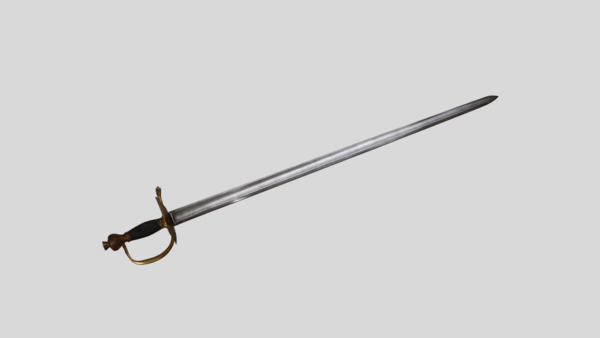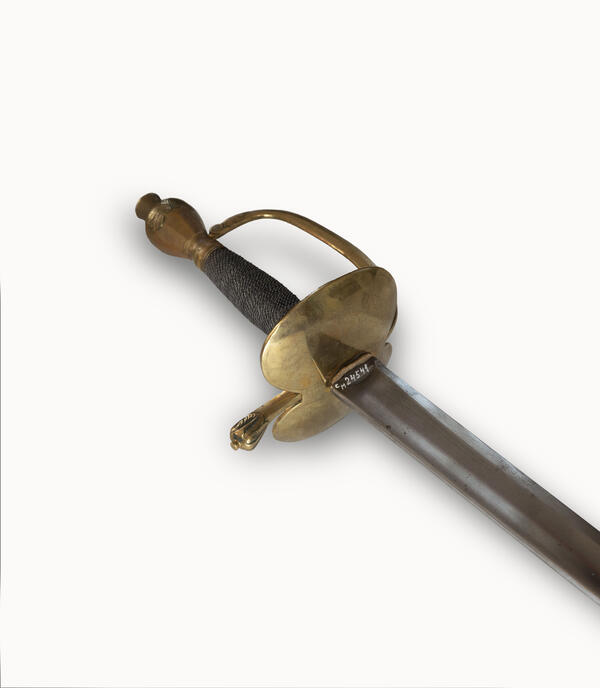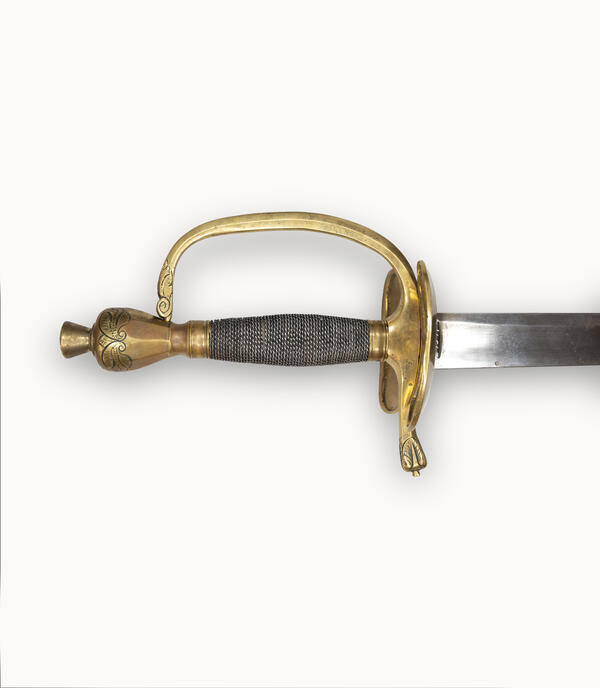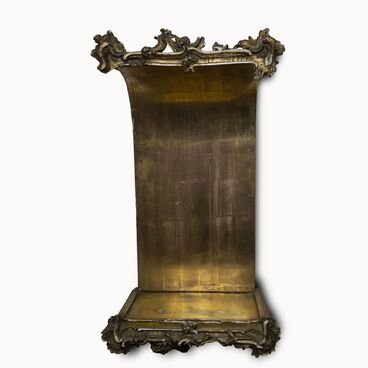The officer’s smallsword housed by the Turinsk Decembrists House Museum has a steel straight single-edged blade with one wide fuller. The weapon does not have any hallmarks or decorative elements. The hilt consists of a handle and a brass guard. The handle is made of wood and is wrapped with twisted steel wire. The guard includes a quillon, a curved bar, and a pommel. It is embellished with an engraving of a floral ornament. The scabbard is missing.
Smallswords were introduced in Russian regiments of the foreign order in the 17th century. From that time on, the Russian army was armed with swords of various designs.
A smallsword is a melee weapon of a cut type, less often of a cut and thrust one. The cross-section of a double-edged blade came in various shapes, including triangular, hexagonal, rhombic, concave, and lenticular. The average blade length was 1 meter, and the weight of an entire weapon could reach up to 1.5 kg. A smallsword hilt has a complex structure. It consists of a handle with a pommel and a guard. The handle serves for holding the weapon. Oftentimes it was covered with anti-skid materials (such as leather and rubber) or wrapped with a rope. The handle is crowned with a pommel, which contributes to better balance and prevents hands from slipping.
The structure and design of the hilt became one of the criteria for classifying this type of weapon. Apart from it, the sword classification also takes into account the size and weight of the blade.
Paul I imposed strict regulations for the Russian manufacture of edged weapons. Since 1798, all infantry and cavalry officers could only have swords of the approved model. In the first quarter of the 19th century, this smallsword was a combat weapon for infantry officers and generals.
In the times of Napoleon, the popularity of smallswords was gradually fading away and they were often replaced with sabers that were considered more durable, convenient, and maneuverable. A smallsword began to be viewed as more of an award weapon or as part of a parade uniform.
The Russian army of that time used bladed weapons not only because of their primary purpose: they were also used to award officers. There were two types of such award weapons — “golden”, which included smallswords and sabers with a gilded hilt, and “Annensky” with smallswords and sabers carrying signs of the Order of St. Anna 3rd Class.
Smallswords were introduced in Russian regiments of the foreign order in the 17th century. From that time on, the Russian army was armed with swords of various designs.
A smallsword is a melee weapon of a cut type, less often of a cut and thrust one. The cross-section of a double-edged blade came in various shapes, including triangular, hexagonal, rhombic, concave, and lenticular. The average blade length was 1 meter, and the weight of an entire weapon could reach up to 1.5 kg. A smallsword hilt has a complex structure. It consists of a handle with a pommel and a guard. The handle serves for holding the weapon. Oftentimes it was covered with anti-skid materials (such as leather and rubber) or wrapped with a rope. The handle is crowned with a pommel, which contributes to better balance and prevents hands from slipping.
The structure and design of the hilt became one of the criteria for classifying this type of weapon. Apart from it, the sword classification also takes into account the size and weight of the blade.
Paul I imposed strict regulations for the Russian manufacture of edged weapons. Since 1798, all infantry and cavalry officers could only have swords of the approved model. In the first quarter of the 19th century, this smallsword was a combat weapon for infantry officers and generals.
In the times of Napoleon, the popularity of smallswords was gradually fading away and they were often replaced with sabers that were considered more durable, convenient, and maneuverable. A smallsword began to be viewed as more of an award weapon or as part of a parade uniform.
The Russian army of that time used bladed weapons not only because of their primary purpose: they were also used to award officers. There were two types of such award weapons — “golden”, which included smallswords and sabers with a gilded hilt, and “Annensky” with smallswords and sabers carrying signs of the Order of St. Anna 3rd Class.






